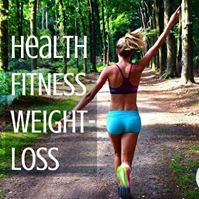With a cautious, gradual approach, the body adapts to movement in a way that supports lower blood pressure
Most of my patients with high blood pressure often ask me if it is okay for them to exercise and pursue vigorous physical activity. Or if exercising could raise their readings higher and trigger a sudden emergency. No doubt regular physical activity is one of the most effective tools to manage blood pressure, outside of medication. However, for many diagnosed with hypertension — especially those with significantly elevated readings — exercise can feel intimidating, even risky.
The concern is valid. Physical activity, particularly if intense or sudden, can lead to a temporary spike in blood pressure. For someone already in a hypertensive range, this can cause symptoms like dizziness, shortness of breath or headache. But this does not mean that exercise should be avoided. On the contrary, with the right precautions and pacing, it lowers blood pressure over time and improves overall cardiovascular health.
Understanding Risks and Benefits
During exercise, it’s normal for blood pressure to rise. In healthy individuals, it returns to baseline quickly afterward. In people with hypertension, this spike can be more pronounced and recovery slower. However, consistent, well-managed exercise improves the elasticity of blood vessels, reduces resting blood pressure, and strengthens the heart — reducing the long-term risk of complications. The challenge lies in knowing how to begin safely.
How to Start Exercising with High Blood Pressure
1. Get a Baseline Evaluation: Get a blood pressure check and, if needed, an ECG or stress test — especially if BP is consistently above 160/100 mmHg (normal is 120/80 mmHg) or if other risk factors (like diabetes, smoking, or high cholesterol) are present.
2. Start Low and Slow: Begin with low-intensity activities such as walking at a comfortable pace, gentle yoga, or stretching. Introduce movement in a way that it doesn’t overwhelm the cardiovascular system. Sessions can start at just 5 to 10 minutes and gradually increase over weeks.
3. Monitor Your Blood Pressure: Check your BP before and after activity. A mild increase during exercise is expected, but if readings exceed 180/110 mmHg, the session should be paused and medical advice sought. Keeping a log of these readings can help adjust your plan safely.
4. Avoid High-Strain Activities Initially: Isometric exercises like heavy weightlifting, holding planks, or pushing through high-resistance workouts can lead to sudden spikes in blood pressure. Instead, opt for aerobic activities such as walking, light cycling or swimming, which promote steady blood flow.
5. Use the Talk Test: During exercise, you should be able to talk but not sing. If you’re gasping for air or feeling faint, the intensity is too high.
6. Pay Attention to Warning Signs: Any episode of chest discomfort, dizziness, blurred vision, or unusual fatigue during or after exercise should be taken seriously. These could indicate a need to adjust your routine — or in some cases, seek medical evaluation.
7. Stay Consistent: Even moderate daily activity can lower systolic blood pressure by 4–9 mmHg, comparable to the effect of some medications. The key is regularity: aim for 30 minutes of moderate activity on most days of the week. This can be broken up into smaller chunks throughout the day.
Exercise is most effective when combined with other blood pressure-lowering habits — reducing salt intake, maintaining a healthy weight, limiting alcohol, and managing stress. With a cautious, gradual approach, the body adapts to movement in a way that supports lower blood pressure, better heart function, and improved quality of life.



